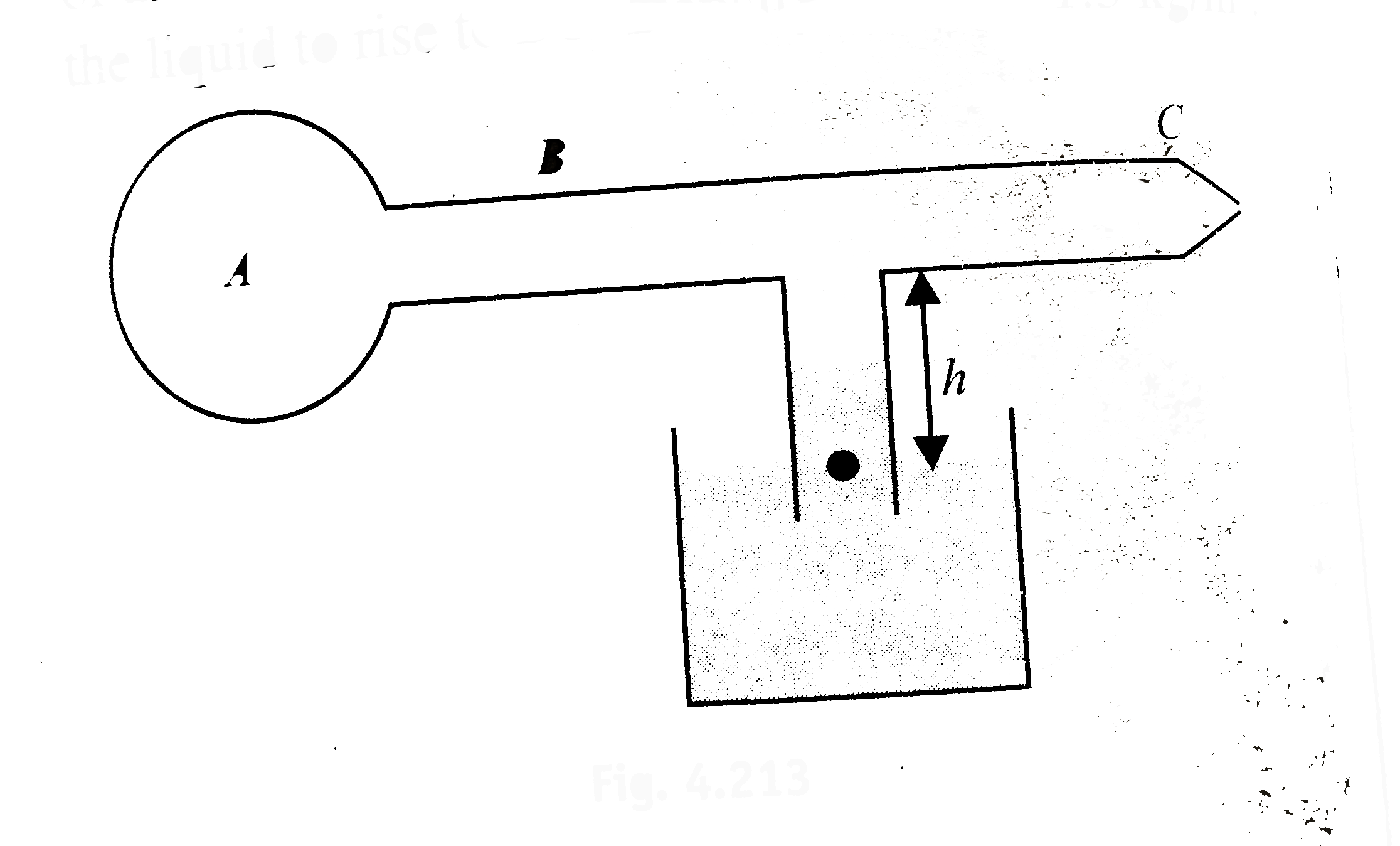Water is used as the manometric liquid in a pitot tube mounted in an aircraft to measure air speed. If the maximum difference in height between the liquid columns is 0.1m, what is the maximum air speed that can be measured? Density of air ddir=1.3kg/m3
For gases, velocity is given by
v=√2hρgd=√2×0.1×1000×9.81.3=38.83m/s
Related Playlists
- BOOK - CENGAGE PHYSICS ENGLISHCHAPTER - FLUID MECHANICSEXERCISE - Subjective25videos
FLUID MECHANICS
- BOOK - CENGAGE PHYSICS ENGLISHCHAPTER - FLUID MECHANICSEXERCISE - Single Correct95videos
FLUID MECHANICS
- BOOK - CENGAGE PHYSICS ENGLISHCHAPTER - FLUID MECHANICSEXERCISE - Exercise 4.310videos
FLUID MECHANICS
- BOOK - CENGAGE PHYSICS ENGLISHCHAPTER - DIMENSIONS & MEASUREMENTEXERCISE - Integer2videos
DIMENSIONS & MEASUREMENT
- BOOK - CENGAGE PHYSICS ENGLISHCHAPTER - GRAVITATIONEXERCISE - INTEGER_TYPE1videos
GRAVITATION
Similar Questions
The ratio of the radius of the tube of a venturimeter is η(η>1) . The ratio of the densities of the liquid in the manometer and the moving fluid is η1 . If the difference in heights of the liquid column in the manometer is h , find the minimum speed of flow of the fluid .
View SolutionWhat is the mass of air in a room measuring 10.0 m x 5.2 m x 2.5 m, if the density of air is 1.3 kg/m3 ?
View SolutionA typical loud sound wave with a frequency of 1KhZ has a pressure amplitude of about 10 Pa
(a) At t=0, the pressure is a maximum at some point X1. What is the displacement at that point at t=0?
(b) What is the maximum value of the displacement at any time and place/ Take the density of air to be 1.29kg/m3 and speed of sound in air is 340m/s.View SolutionThe volume of a balloon is 1000m3. It is filled with helium of density 0.18kgm−3. What maximum load can it life. Density of air is 1.29kgm−3
View SolutionCalculate the minimum distance in air required between the source of sound and the obstacle to hear an echo. Take speed of sound in air = 350 ms−1
View SolutionFigure shows a crude type of atomizer. is compressed, air flows swiftly through tube BC causing a reduced pressure in the particles of the vertical to Liquid rises in the tube, enters BC and is sprayed out. if the pressure in the bulb is Pa+P, where P is the gauge pressure and Pa is the atmospheric pressure, v is the speed of air in BC, find how large would v need to be to cause the liquid to rise to BC. Density of air =1.3kg/m3.
 View Solution
View SolutionWith what terminal velocity will an air bubble 0.8mm in diameter rise in a liquid of viscosity 0.15N−s/m2 and specific gravity 0.9? Density of air is 1.293kg/m3.
View SolutionWith what terminal velocity will an air bubble 0.8mm in diameter rise in a liquid of viscosity 0.15N−s/m2 and specific gravity 0.9? Density of air is 1.293kg/m3.
View SolutionTwo sound waves one in air and the other in fresh water are equal in intensity.
(a) Find the ratio of pressure amplitude of the wave in water to that of the wave in air.
(b) If the pressure amplitudes of the waves are equal then what will be the ratio of the intensities of the waves.
[Vsound=340m/s in air & density of air =1.25kg/m3,Vsound=1530m/s in water, density of water =1000kg/m3]View SolutionA sphere has mass of (20±0.4)kg and radius of (10±0.1) m. Find the maximum percentage error in the measurement of density.
View Solution


